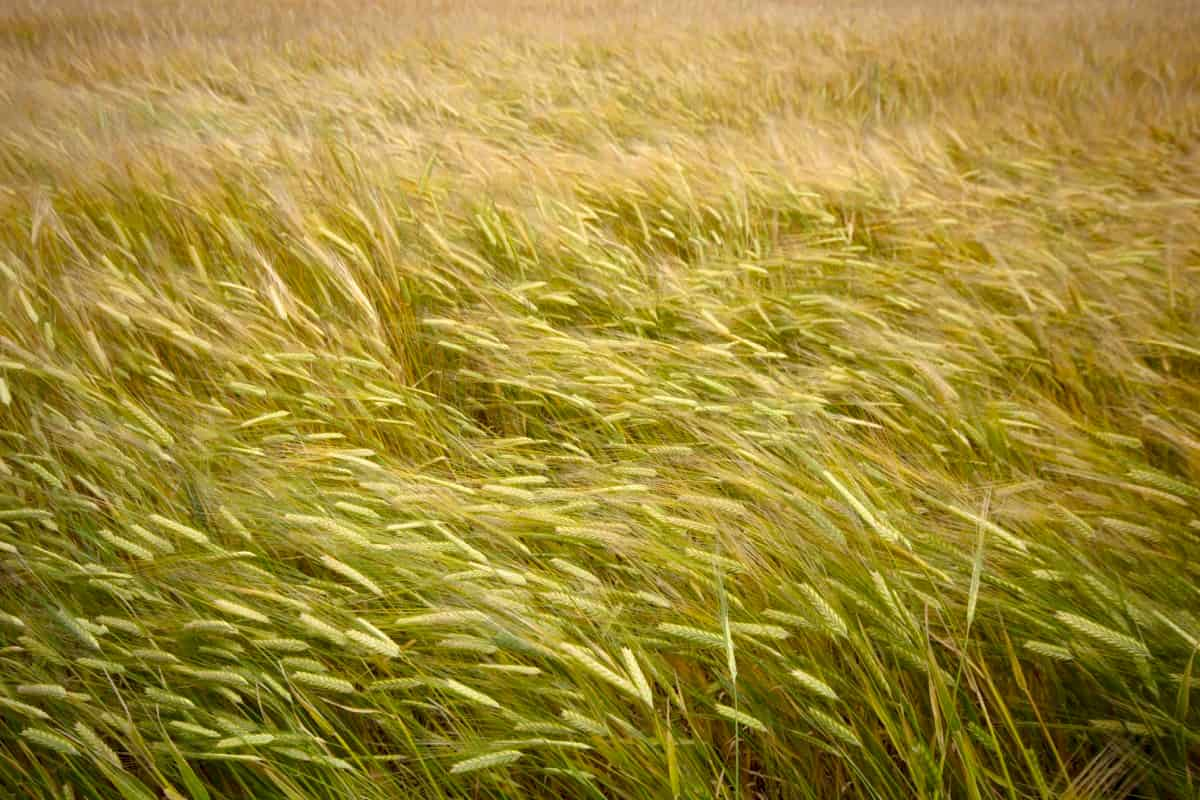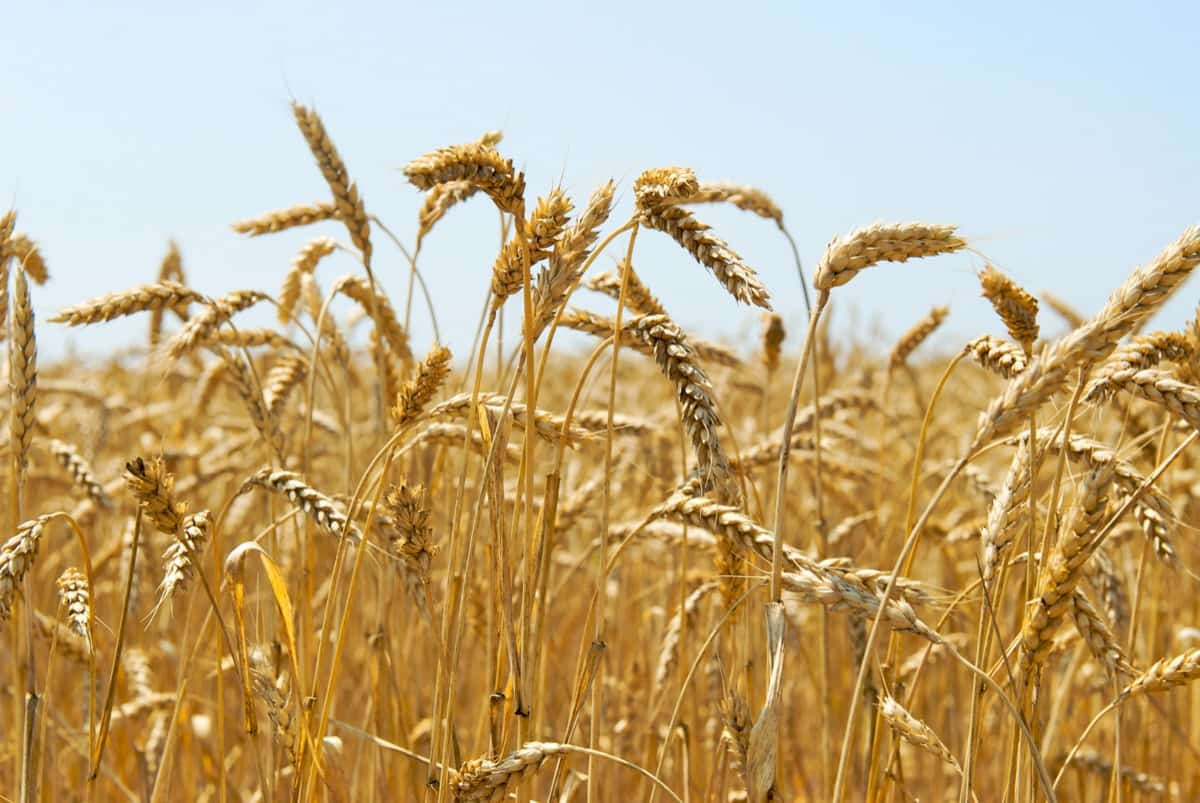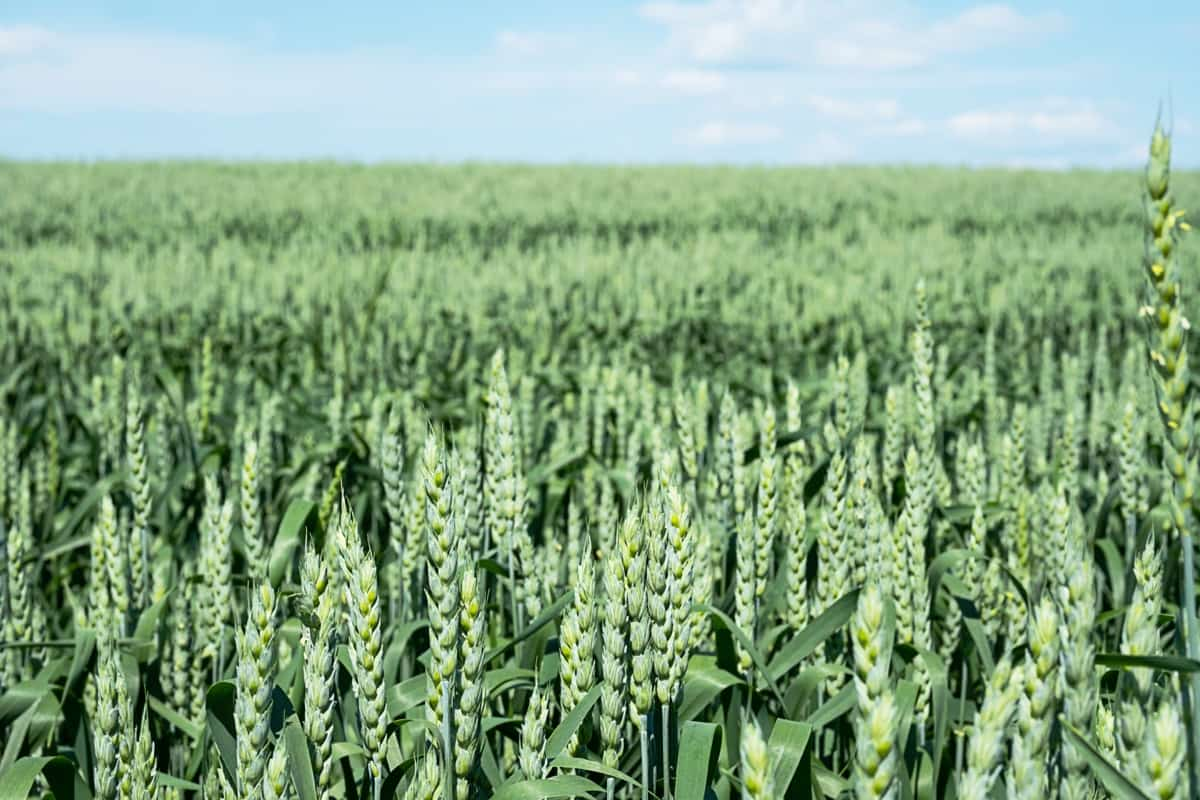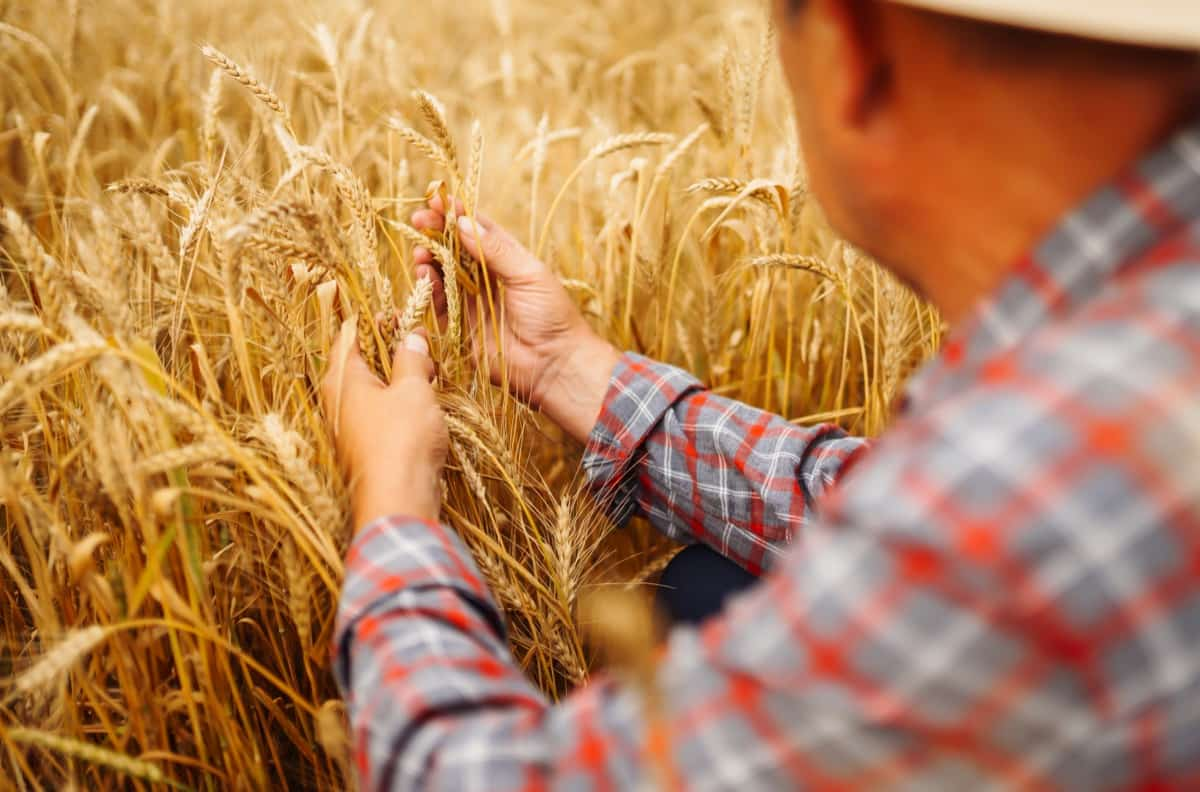Zero tillage, known as no-till farming, has gained popularity recently as a sustainable and efficient farming practice. A study conducted by the USDA found that adoption of no-till agriculture increased from 17% in 1989 to 37% in 2012. This technique involves planting crops without disturbing the soil, which helps retain moisture, reduce erosion, and promote soil health.

In wheat farming specifically, zero tillage has been shown to increase yields by 4-6% compared to conventional tillage while reducing costs and labor. Despite its benefits, zero tillage also presents challenges, such as weed and pest management and proper crop rotation. This blog post will explore the benefits, challenges, and best practices of zero tillage in wheat farming.
Wheat Farming with Zero Tillage
What is Tillage?
Tillage refers to preparing the soil for planting by mechanical manipulation, such as plowing, harrowing, and disking. Tillage refers to preparing agricultural land by mechanically agitating the soil through digging, stirring, and overturning. However, in recent years, the adoption of zero tillage has increased due to its cost-effectiveness and environmental benefits.
With zero tillage, crops are sown directly into the soil through drillers without prior land preparation, minimizing soil disturbance and leaving previous crop stubble on the surface as natural mulch. This practice has been used for centuries to control weeds, aerate the soil, and create a seedbed.
However, tillage can also negatively impact soil health and the environment, such as soil erosion, nutrient loss, and reduced biodiversity. In fact, according to the USDA, conventional tillage can cause up to 60% of soil erosion in the US. To address these issues, farmers are increasingly adopting alternative practices, such as zero tillage, conservation tillage, and reduced tillage, which aim to minimize soil disturbance and promote soil conservation.
What is Zero Tillage in Wheat?
Zero tillage, or no-till farming, is a method of planting crops without disturbing the soil. This means the previous year’s crop residue is left on the soil surface to act as a natural mulch, and seeds are planted directly into the soil without plowing or tilling. According to a study by the FAO, zero tillage has been adopted on around 125 million hectares of agricultural land worldwide, with the highest adoption rates in North and South America, Australia, and parts of Asia.
In wheat farming specifically, zero tillage has been shown to reduce erosion by 90%, increase water infiltration by 50%, and improve soil organic matter by 30-50%. This technique also requires less labor, fuel, and machinery, resulting in cost savings for farmers.
In case you missed it: Wheat Farming in the USA: By State and Production

Benefits of Zero Tillage in Wheat Farming
- Higher Yields: Zero tillage can increase wheat yields by reducing the crop duration, allowing for early cropping, and promoting the growth of beneficial microorganisms in the soil. Studies have shown that zero tillage can increase wheat yields by 4-6% compared to conventional tillage.
- Reduced Costs: Zero tillage can significantly reduce the cost of inputs for land preparation, resulting in savings of around 80%. This is because there is no need for plowing or tilling, which requires expensive equipment and fuel.
- Efficient Use of Water: Residual moisture in the soil can be effectively utilized with zero tillage, reducing the need for irrigation. In fact, studies have shown that the number of irrigations required can be reduced by up to 50%.
- Improved Soil Health: Zero tillage promotes the accumulation of dry matter and organic matter in the soil, which enhances soil health and fertility. This results in improved crop yields and better nutrient uptake.
- Environmental Benefits: Zero tillage is environmentally safe as it reduces greenhouse gas emissions through carbon sequestration. Additionally, it reduces soil compaction and water loss by runoff, preventing soil erosion.
- Biodiversity: As the soil is left intact and not disturbed, zero tillage promotes the growth of useful flora and fauna. This improves soil structure and nutrient cycling, yielding better crop growth.
Best Practices for Successful Zero Tillage in Wheat Farming
- Utilizing the yield potential of new cultivars requires adopting suitable crop management techniques, including fertilization, irrigation, weed control, crop geometry, and crop residue management.
- Wheat farming has benefited from the development of zero-tillage technology, which lowers costs without sacrificing yield.
- Rotary tillage and furrow irrigated raised beds (FIRBs) technology is two more resource conservation technologies (RCTs) that are gaining popularity.
- The best yields can be achieved in any environment by carefully controlling the sowing time, seed rate, and fertilizer treatment. The most crucial elements for the optimum use of inputs and technologies are timely sowing and adhering to advised agronomy.
- The loss of soil organic matter and vital plant nutrients results from intensive tillage, burning of crop residue, and ongoing soil mining.
- The negative effects on soil can be reversed by implementing resource conservation techniques like residue management, zero tillage, conservation agriculture, and leguminous crops.
- These techniques can also be used to develop new and improved residue management and conservation agriculture machinery.
In case you missed it: Top 20 Steps to Boost Wheat Yield: How to Increase Wheat Production

Wheat Farming with Zero Tillage in India
Wheat farming is a major agricultural activity in India, and farmers are always looking for ways to improve their yield while conserving resources. One technique that has gained importance in recent years is zero tillage. In this technique, wheat seeds and fertilizers are directly placed into the undisturbed soil, saving time and money in field preparation.
Zero Tillage Technique
Zero tillage involves using a specially designed machine that creates narrow slits in the soil instead of the conventional shovel-type furrow opener. This machine, known as the zero tillage ferti-seed drill, directly places wheat seed and fertilizers at the proper depth into the soil after rice harvesting. This technology allows for both timely and late sowing of wheat and in case of late sown, sowing can even be advanced by 7-10 days.
Fertilizer Application
To get a good yield in zero tillage, the seed rate, fertilizer doses, and other packages of practices should be the same as in the conventional method. However, farmers can apply ⅓ or even lesser N, full P & K at sowing, and the remaining nitrogen in two equal splits at first and second irrigation. It is important to avoid planking after the sowing of wheat by this machine.
Benefits of Zero Tillage
Zero tillage is a profitable resource conservation technique that offers several benefits for wheat farming in India. Firstly, it saves time and money that would have been spent on field preparation. Secondly, it reduces carbon dioxide emissions due to the burning of fuel during field preparation.
In conventional tillage, carbon dioxide emission is about 208 kg/ha, whereas, in zero tillage, it is only around 16 kg/ha. Thirdly, zero tillage helps to develop resistance against ‘isoproturon’ in Phalaris minor, a weed that can significantly reduce wheat yield. Fourthly, Karnal bunt and termite incidence have also been reported to be less in zero tillage.
In case you missed it: Best Fertilizer for Wheat: Organic, NPK and Application

Advantages of Wheat Farming with Zero Tillage in India
- Significant savings in time, energy, labor, and money and reduced wear and tear on machinery resulted in a more profitable operation.
- The technology enables wheat sowing to be advanced by 7 to 10 days, which is especially useful under late sown conditions where basmati rice, cotton, or sugarcane harvesting is delayed beyond 25th November.
- This farming method can save more than Rs. 3000 per hectare in cultivation costs, thereby increasing farmers’ profit margin.
- There is a significantly lower chance of lodging, fewer diseases, especially Karnal bunt and powdery mildew, and lower infestation of weeds like phalaris minor.
- Yield is either the same or higher (5-10%) than the conventional method, particularly in sodic soils where waterlogging is an issue and where wheat sowing is late.
- Zero tillage farming is becoming increasingly popular among Indian farmers as it offers many benefits over traditional farming methods. By minimizing soil disturbance and using a specially designed machine to sow wheat seeds and fertilizers directly into the undisturbed soil after rice harvesting, farmers can save a significant amount of time, labor, and money. Using zero tillage also helps reduce the wear and tear on machinery, which can extend the life of farm equipment.
- Another major benefit of zero tillage farming is that it allows farmers to sow wheat earlier than conventional methods, which is particularly advantageous in areas where the harvesting of crops like basmati rice, cotton, or sugarcane is delayed. Farmers can achieve better yields and a more profitable harvest by sowing wheat earlier.
- Zero tillage farming also helps to reduce the incidence of diseases like Karnal bunt and powdery mildew, as well as infestations of weeds like phalaris minor. The result is a healthier crop and a more profitable harvest.
Zero Tillage Technology for Wheat Crops
- Due to the late planting of wheat following rice, especially basmati rice, the country’s wheat production is lower than that of nearby irrigated areas.
- Wheat planting is further delayed by 2-3 weeks by pre-irrigation or rainfall when the field is prepared. Wheat can be planted straight with zero tillage to end the conflict with rice.
- After the previous crop has been harvested, zero-tillage refers to the direct sowing of seeds on no-tilled soil. It enables the early and timely seeding of wheat crops and lowers production costs by using fewer fossil fuels, pesticides, etc.
- In zero-tillage, crops are planted with the least amount of soil disturbance possible by scattering the seeds directly onto the ground in a small, 3–4 cm wide by 4–7 cm deep slit. Sowing with zero tillage may eventually lead to improved soil quality.
- Organic nitrogen is more readily available in long-term zero-tillage seeded fields than in traditional fields. There is a 90% reduction in soil erosion, while soil biological activity and biodiversity have increased.
- Drought has affected crop output recently, and farmers are now fully aware of the implications of soil erosion. Tillage is a key component of traditional farming practices in rice-wheat growing regions to provide a fine seedbed for wheat planting.
- There is a cultural presumption that soil health and total productivity are frequently adversely affected by plowing the field.
- Increased erosion and soil deterioration are brought on by excessive tillage because it removes surface residues that shield the soil, especially in warmer regions where the topsoil layer is thin.
- Farmers can improve yields by improving soil water through improved snow and rainfall retention and lowering evaporation losses. The challenge for the region is to significantly boost productivity while improving agriculture’s effectiveness, sustainability, and environmental impact.
In case you missed it: Ways Wheat Farming Make You Rich in a Short Time

Challenges of Zero Tillage in Wheat Farming
- While Zero Tillage (ZT) is a profitable resource conservation technique for wheat farming in India, several challenges are associated with it. These challenges include:
- Residue management: Since no soil is being tilled, the previous crop residue is left on the soil surface, which can act as a weed host, and can impede proper seed placement and emergence.
- Compaction: Zero tillage can lead to soil compaction over time, reducing crop yield and making it difficult to maintain a healthy soil structure.
- Pest and disease management: Due to the absence of tillage, weeds, pests, and diseases can be challenging in ZT farming. Proper crop rotation and integrated pest management practices must be followed to minimize these issues.
- Soil fertility management: In zero tillage, there is a greater reliance on fertilizers for soil fertility, leading to nutrient imbalances and depletion of soil organic matter if not managed properly.
- Equipment costs: The cost of purchasing and maintaining the specialized equipment required for ZT farming can be high, which may be a barrier for small and marginal farmers.
- Despite these challenges, with proper management practices, Zero Tillage can still be a profitable and sustainable option for wheat farming in India, especially in areas with waterlogging and sodic soils.
Case Study: Zero-tillage wheat farming boosts yields and incomes for farmers in Bihar, India
Zero-tillage (ZT) wheat farming in farmers’ fields under varying climatic conditions in Bihar, India. Farm households spanning four years showed that ZT led to significant yield gains, especially in less favorable seasons. Furthermore, ZT provided cost savings, increasing average household incomes by 5%. The study concludes that ZT for wheat in Bihar provides tangible and consistent benefits to farmers.
In case you missed it: Revolutionizing Duck Farming Business: The Benefits and Techniques of Duck Rearing in Polythene Ponds

Conclusion
Zero Tillage (ZT) technology for wheat farming has numerous benefits, such as cost savings, yield improvement, and environmental sustainability. However, this method faces initial investment costs and weed management challenges. Best practices include proper selection of machinery, timely sowing, and appropriate fertilizer and irrigation management.
- Organic Farming vs. Natural Farming (ZBNF): Key Principles and Differences
- Strawberry Nursery Establishment and Management
- Modi Vision for Indian Agriculture
- Government Support and Policies for ZBNF in India
- Deworming Schedule for Sheep: A Beginners Guide
- Ultimate Guide to Beans Farming in Kenya: From Planting to Profits
- Ultimate Guide to Natural Vegetable Farming
- Natural Farming for Sustainable Livestock Management
- Dairy Farm Technology in India: The Future of Dairy Husbandry
- Comprehensive Guide to Organic Farming in Villages
- Modern Sheep Farming Technology: The Future of Sheep Husbandry
- Goat Farming Technology: The Future of Goat Husbandry
- How to Build a Low-budget Goat Shed: Cheap Ideas and Tips
- Goat Farming Training Programs in India: A Beginner’s Guide
- Types of Pesticides Used in Agriculture: A Beginner’s Guide
- Economical Aquaculture: A Guide to Low-Budget Fish Farming
- 15 Common Planting Errors That Can Doom Your Fruit Trees
- How to Make Houseplants Bushy: Effective Tips and Ideas
- Innovative Strategies for Boosting Coconut Pollination and Yield
- Pollination Strategies for Maximum Pumpkin Yield
- The Complete Guide to Chicken Fattening: Strategies for Maximum Growth
- Natural Solutions for Tulip Problems: 100% Effective Remedies for Leaf and Bulb-Related Issues
- Revolutionizing Citrus Preservation: Towards a Healthier, Greener Future
- Natural Solutions for Peony Leaf and Flower Problems: 100% Effective Remedies
- Maximizing Profits with Avocado Contract Farming in India: A Comprehensive Guide
- Natural Solutions for Hydrangea Problems: 100% Effective Remedies for Leaf and Flowers
- The Ultimate Guide to Choosing the Perfect Foliage Friend: Bringing Life Indoors
- From Sunlight to Sustainability: 15 Ways to Use Solar Technology in Agriculture
- The Ultimate Guide to Dong Tao Chicken: Exploring from History to Raising
- The Eco-Friendly Makeover: How to Convert Your Unused Swimming Pool into a Fish Pond
- Mastering the Art of Delaware Chicken Farming: Essentials for Healthy Backyard Flocks
- 20 Best Homemade Fertilizers for Money Plant: DIY Recipes and Application Methods
- How to Craft a Comprehensive Free-Range Chicken Farming Business Plan
- Brighten Your Flock: Raising Easter Egger Chickens for Beauty and Bounty
- How to Optimize Your Poultry Egg Farm Business Plan with These Strategies
- Subsidy for Spirulina Cultivation: How Indian Government Schemes Encouraging Spirulina Farmers